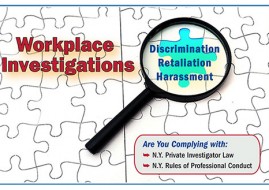When Your Client Plans to Commit a Crime
By Mary C. Daly [Originally published in NYPRR January 2001]
The ethical duty of confidentiality is a cornerstone of the client-lawyer relationship. In its absence, clients fearing the disclosure of embarrassing or detrimental information would hesitate to confide in their lawyers. The likely consequence of this reluctance to disclose is to make it more difficult — or even impossible — for lawyers to give sound legal advice. Clients, the public at large, and the civil and criminal justice systems would ultimately bear the weight of this handicap. DR 4-101 of the New York Lawyer’s Code of Professional Responsibility (Code) entitled “Preservation of Confidences and Secrets of a Client” seeks to avoid this damaging consequence by enshrining the duty of confidentiality as one of the two most important obligations that lawyers owe clients. The other is the duty of loyalty. [See, DRs 5-101 – 5-111.]
At the same time, however, the Code declines to make the duty to disclose absolute, recognizing a limited number of exceptions. This article examines the so-called “future crime” exception that is found in subsection (C)(3) of DR 4-101. The subsection’s language is straightforward: “A lawyer may reveal … [t]he intention of a client to commit a crime and the information necessary to prevent the crime.” Despite the simplicity of the subsection’s language, its application can be especially tricky.
Disclosure Is Permissive
As a threshold matter, three points bear mentioning: first, the exception is phrased in permissive language, “a lawyer may reveal.” A lawyer’s failure to exercise this option is neither a violation of the Code that subjects the lawyer to discipline nor the basis for civil liability. [See, EC 4-7, “A lawyer cannot be subjected to discipline either for revealing or not revealing such intention or information;” see also, Restatement of the Law Governing Lawyers §67(4) (2000) (Restatement).] EC 4-7 identifies “a wide range of factors” that a lawyer should consider in making the decision. [Accord N.Y.S. Op. 562 (1984).]
Second, the exception applies only to any future “crime.” Unlike the ABA Model Rules of Professional Conduct, no descriptive limitation is attached to the term. Model Rule 1.6 permits the disclosure of a future criminal act only if the lawyer reasonably believes it is likely to result in imminent death or substantial bodily harm. A crime that may cause economic harm or injury falls outside these parameters.
Third, the Code does not define “crime.” The Code’s omission of a definition has the practical effect of requiring a lawyer who is entertaining the possibility of disclosure to determine that the client’s intended future conduct is actually a crime under New York State law. In some cases, that determination will not be difficult to make. In others, it may require careful research. Research may disclose that the proposed conduct of a client that a lawyer finds morally offensive rises only to the level of civil — but not criminal wrongdoing. In this circumstance, disclosure is prohibited, but the lawyer may still be able to withdraw from the representation. [See, DR 2-110(C). Cf. N.Y.C. Op. 1994-8 (1994), a lawyer must withdraw from representing the purchaser of real estate, if the purchaser persists in making “under the table” payments.]
Consulting Criminal Lawyer
A lawyer who is uncertain whether the client’s intended future conduct is criminal would be well advised to seek the assistance of an experienced criminal lawyer. A client whose lawyer has wrongfully disclosed confidential communications about conduct that turns out not to be criminal may easily win a jury’s sympathy in a subsequent action for malpractice or breach of a fiduciary duty. Punitive damages are not beyond the pale. Consultation with an experienced criminal lawyer before taking any action puts the lawyer in a positive light and is strong evidence of the lawyer’s good faith in making the decision to disclose.
Determining the client’s intent is also problematic. In the absence of an absolute declaration by the client, the lawyer faces the difficult decision of assessing and predicting the client’s future behavior. EC 7-6 cautions: “In many cases a lawyer may not be certain as to the state of the mind of the client, and in those situations the lawyer should resolve reasonable doubts in favor of the client.”
If a lawyer has concluded that a client’s intended conduct is indeed criminal and may be revealed without violating the Code, the lawyer must still act with restraint. Subsection (C)(3) limits disclosure to “the information necessary to prevent the crime.” The Restatement provides slightly more guidance, cautioning that disclosure “should be no more extensive than the lawyer reasonably believes necessary to accomplish the relevant purpose.” [Restatement §67 cmt. j.] Determining what is “necessary” calls for the application of a facts-and-circumstances test. In some instances, all that may be needed is a telephone call to the intended victim (e.g., to alert a bank officer that a loan application filed by the client needs to be reexamined). In other instances, more aggressive action and fuller disclosure may be needed (e.g., alerting a judge to a defendant’s threat to inflict physical harm on the judge, or a district attorney of a threat directed at a witness for the prosecution). In an extreme case, the lines between a present, past, and future crime may become blurry. In some cases, it may be appropriate to call the police to a crime scene, e.g., if the lawyer believes that the victim of the client’s criminal conduct may still be alive or that the client may commit suicide in response to her situation. [See generally, People v. Fentress, 103 Misc.2d 179, 425 N.Y.S.2d 485 (Co. Ct. Dutchess Co. 1980).] A client’s admission of past child abuse raises extremely thorny issues in the light of the psychological literature suggesting that an act of abuse is rarely an isolated episode and is likely to be repeated over time. [See, Andrew Schepard, “Child Abuse and Custody-Part II: A Lawyer’s Obligation,” NYLJ, 5/13/1999.]
Ongoing Crime Presents Dilemma
Ongoing crimes present an acute interpretative dilemma under subsection (C)(3). Generally speaking, the Code prohibits the disclosure of a client’s past criminal conduct. Unless one of the exceptions set forth in subsections (C)(1)–(2) or (4)–(5) applies, disclosure is not an option. From a conceptual perspective, the interpretative dilemma springs from the fact that when a lawyer reveals a client’s intention to commit a future crime which has been ongoing, the lawyer is inevitably revealing the client’s prior unlawful activity.
Attempts to resolve this dilemma have met with little success. In Opinion 405, the NYSBA Committee on Professional Ethics concluded that subsection (C)(3) did not allow disclosure of a continuing crime that “is normally incident to” a past crime. [N.Y.S. Op. 405 (1975).] Applying this interpretation, the Committee subsequently concluded that a lawyer who learned of a client’s perjury after the client testified but before the client was scheduled to resume testifying the next day could not reveal the perjury. [See, N.Y.S. Op. 674 (1995).] Other bar association opinions, however, would apply (C)(3) “when the client … is continuing an ongoing criminal scheme.” [See, e.g., N.Y.C. Op. 1994-10 (1994); N.Y.C. Op. 1994-8 (1994); accord N.Y.C.L.A. Op. 712 (1996), “continuing crime.”]
A lawyer who learns that a client is engaging in a continuing crime can never be certain whether he has a duty to disclose or may elect not to disclose. Even assuming that Opinion 405 correctly interprets subsection (C)(3), it is difficult to imagine either disciplinary sanctions or civil liability being imposed if the lawyer makes an error in judgment and reveals a continuing crime that “is normally incident to” a past crime. Subsection (C)(3)’s disclosure provision should be examined in relationship to other Code provisions. For example, if a lawyer is licensed in New York and another jurisdiction, she may have to determine which jurisdiction’s code applies before deciding whether she may rely on (C)(3)’s permissive disclosure option. The importance of making the correct decision is self-evident. If the other jurisdiction has adopted the ABA’s Model Rule 1.6, the lawyer may disclose the client’s intention only if the criminal act is likely to result in imminent death or substantial bodily harm. In contrast, if the jurisdiction has adopted a mandatory crime disclosure rule such as Rule 1.6 of the New Jersey Rules of Professional Conduct, the lawyer has no discretion and must disclose the client’s intention to commit a future crime. DR 1-105 provides guidance to a New York lawyer who is also licensed in another jurisdiction and who must determine which jurisdiction’s rules apply to the lawyer’s conduct. The Reporter’s Note to Section 67 of the Restatement offers a survey of the different standards that govern from state to state, describing when a lawyer must, must not, or may make disclosure of a client’s intention to commit a crime.
The public policy served by permitting disclosure is the prevention of harm to the specific target of the client’s intended future conduct and to the public in general. In New York other disciplinary rules may also serve that same policy. Thus, Subsection (C)(2) allows a lawyer to make disclosure “when permitted under Disciplinary Rules or required by law or court order.” Subsection (C)(4) authorizes disclosure “to defend the lawyer or his or her employees or associates against an accusation of wrongdoing.” Subsection (C)(5) permits a noisy withdrawal under limited circumstances involving a client’s crime, fraud, or presentment of materially inaccurate information. A lawyer may be able to invoke subsections (C)(2) or (4)–(5), if subsection (C)(3) is not available or its application is uncertain. If the client’s wrongdoing relates to the affairs of an organization that is also a client of the lawyer’s, the lawyer may be able to disclose the wrongdoing to the organization’s other constituents. [See e.g., N.Y.C. Op. 1994-10 (1994), a lawyer for a limited partnership must inform the limited partners of the wrongdoing of the general partner who is also a client, but may not reveal the general partner’s conduct to a non-client unless the general partner is planning to commit a crime in the future or is continuing an ongoing criminal scheme.]
Mary C. Daly is the James H. Quinn Professor of Legal Ethics at Fordham Law and former Chair, Committee on Professional and Judicial Ethics, Association of the Bar of the City of New York.
DISCLAIMER: This article provides general coverage of its subject area and is presented to the reader for informational purposes only with the understanding that the laws governing legal ethics and professional responsibility are always changing. The information in this article is not a substitute for legal advice and may not be suitable in a particular situation. Consult your attorney for legal advice. New York Legal Ethics Reporter provides this article with the understanding that neither New York Legal Ethics Reporter LLC, nor Frankfurt Kurnit Klein & Selz, nor Hofstra University, nor their representatives, nor any of the authors are engaged herein in rendering legal advice. New York Legal Ethics Reporter LLC, Frankfurt Kurnit Klein & Selz, Hofstra University, their representatives, and the authors shall not be liable for any damages resulting from any error, inaccuracy, or omission.
Related Posts
« Waiting for Courts to Amend Code Assessing Impact of Proposed DR 1-107, etc. »












